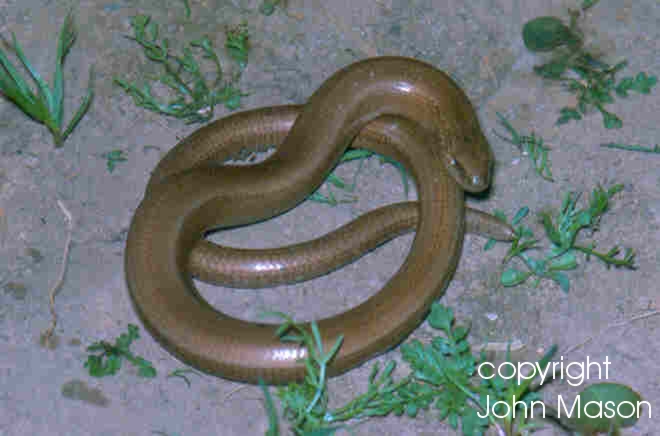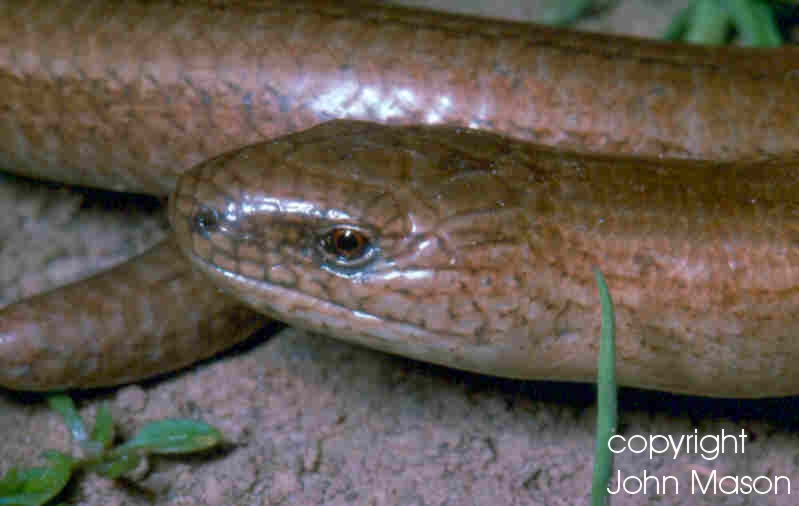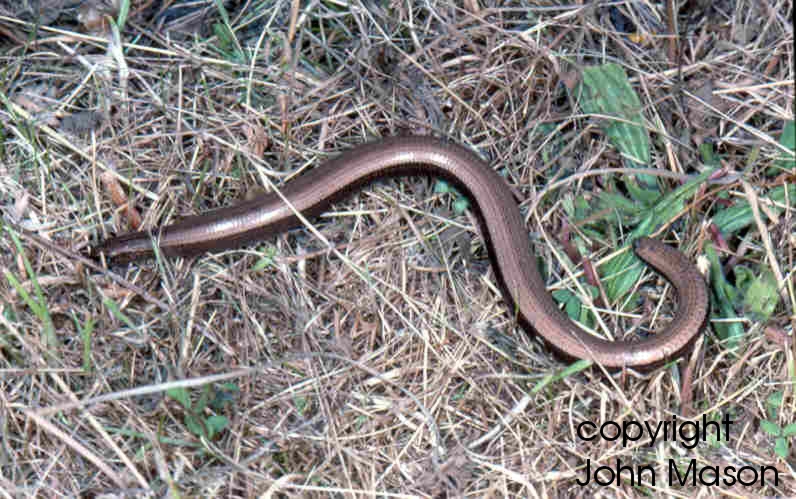
 |
WELCOME TO CHESHIRE BIODIVERSITY
|
|
| HOME | INTRODUCTION | SPECIES | HABITATS | PARTNERS | WHAT'S NEW | WHAT'S ON | OTHER INFO |
 Links
to associated HAPs
Links
to associated HAPs The slow-worm is somewhat enigmatic. Although it is a true lizard, the slow-worm has no legs and is commonly mistaken for a snake. This species is very secretive and is not often seen.
Slow-worms prey on small slugs, earthworms and soft bodied invertebrates. They live beneath rubbish, compost, scrap metal and other suitable debris. Most slow-worms are found by turning over such debris and are rarely seen in the open.
Slow-worms exhibit the widest habitat preference of Britain's reptiles. However, there have been only four records in the Cheshire region since 1995. It is possible that more sites will be discovered as the profile of the slow-worm is raised. Slow-worms were known to occur everywhere in the UK during the 1950's and, although very few records exist, this may be due to the animal's then ubiquitous occurrence. Allotment sites are one of the slow-worms major strongholds in the Cheshire region.
Slow-worms are protected under schedule 5, Section 9 of the Wildlife and Countryside Act 1981, against intentional injury or killing. Trade in slow-worms is also prohibited.
 |
 |
OBJECTIVES |
LOCAL TARGETS |
|
To establish the current distribution of slow-worms in the Cheshire region and promote slow-worm conservation. |
Targets awaited |
ACTIONS REQUIRED |
|
|
|
| 1997 - 2006 Action Completed |
|
BBC Wildfacts website
- www.bbc.co.uk/nature/wildfacts/factfiles/281.shtml
Herpetological Consrevation Trust - www.herpconstrust.org.uk/
Join the Cheshire and Wirral Amphibian and Reptile Group, ask Julian Whitehurst (phone 01829 770797) for details.
| LBAP Chair | Kat
Walsh, Cheshire Wildlife Trust Phone: 01948 820728 |
Jinks, S.A. (1997):
The end of the line for the slow-worm? The slow-worm. Kent reptile and amphibian
group, British Herpetological Society.
HCIL (1995) The Herpetofauna Workers Guide.
Langton et. al. (1993) A review of British Herpetofauna populations in a wider
context, Joint Nature Conservation Committee.
HMSO (1981): The Wildlife Countryside Act (1981).
HMSO (1995): Biodiversity: The UK Steering Group Report, Volume 1: Meeting the
Rio Challenge, London.
HMSO (1995): Biodiversity: The UK Steering Group Report, Volume 2:Action Plans,
London.
| HOME | INTRODUCTION | SPECIES | HABITATS | PARTNERS | WHAT'S NEW | WHAT'S ON | OTHER INFO |
|